Tonewinner high peice effective Hi-Fi audio power amplifier class a two channels amp
This review was made possible thanks to a mistake in the logistics of the importer, a lucky mistake for me, who had to send me an integrated with a built-in DAC. I was already in the mood, ready to handle those thirty kilos of heavy metals. Instead, I was faced with double packaging, with an invitation to wear the supplied gloves and the ToneWinner AD-1PA final amp enclosed in a protective chenille-like bag, inexplicably immovable in the face of any effort ...
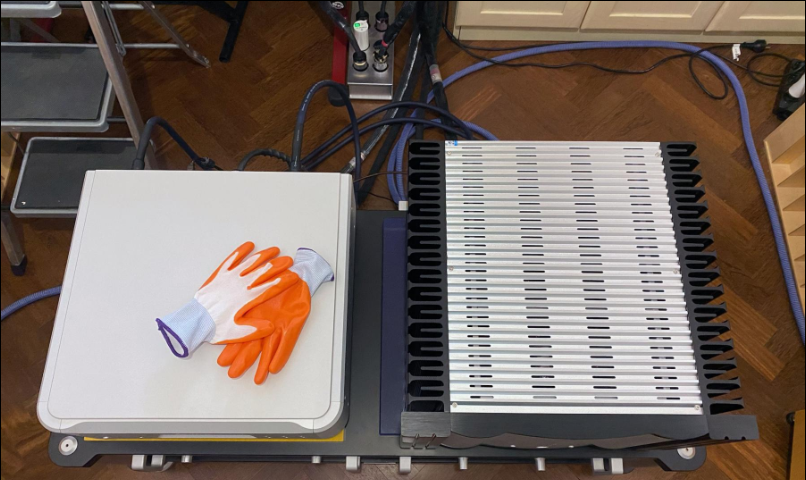
Forty-two kilos ... 42, Emiliopablo, you can't handle it alone!
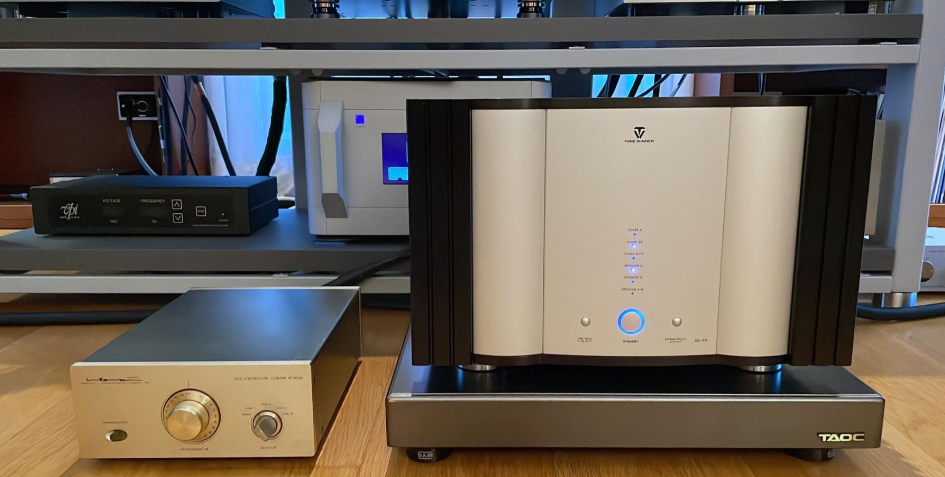
In appearance, this electronics is obviously impressive. Beyond the measures, the finishes are of a very high level, a solid aluminum chassis with a three-centimeter-thick corrugated front and side fins, also in aluminum, machined from solid, oversized metal decoupling feet, high quality connections and so much substance, in all respects comparable to the best American and European high-end production. But, if this were not enough to overcome the distrust of a Chinese product, let's see who is behind this amplifier.
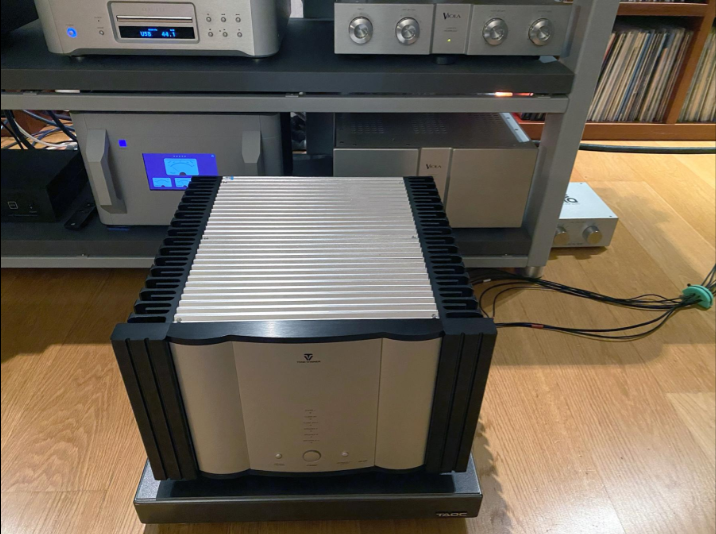
And the winner is ...
ToneWinner is a Chinese company founded in 1992 and specializes in the research, production and marketing of audio products. It is an extremely competitive reality that, with thirty years of experience and an active presence on the international market, is recognized as the most important Chinese high fidelity brand.
The company has a production area of 15,000 square meters, robotic machinery and 300 highly specialized employees who look after the research and design of their products, as well as their manufacture. In so many years of activity, ToneWinner has obtained numerous international certifications, for example it was the first Chinese company to obtain the Dolby Atmos standard and HDMI, and critical accolades for the quality of its products.
The final test is the flagship dual channels hi fi stereo amplifier of the house, solid state technology that makes use of several exclusive patents, such as the automatic recognition of the mains voltage, 110 or 220 volts, and a dynamic class A circuit that reconciles the need audiophile with that of energy saving. The design is also equipped with short circuit protection, overheat protection and DC current protection. In short, not only built as a battleship, but also unsinkable.
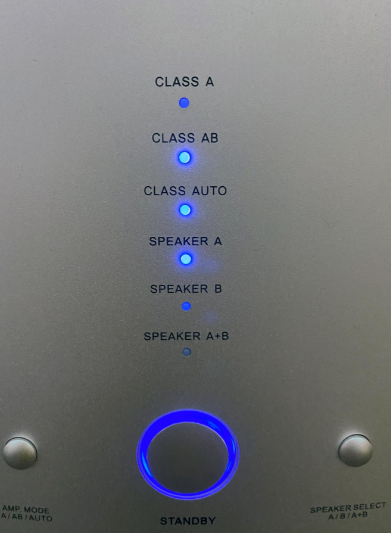
A look inside: the components are the top that is expected in machines of this caliber: 32 Toshiba transistors that ensure 60 amps of peak output current, Elna and Sounder electrolytic capacitors; the power supply passes through a massive 1200 watt toroidal transformer with separate windings for each channel, with a train of capacitors that guarantees 180,000 µF of filtering capacity. Just enough to linearize the signal of any musical program and guarantee a powerful energy reserve. All carefully divided into sections within the chassis, physically isolated by massive aluminum bulkheads.
The nameplate data speak of 300 watts of power into 8 ohms, which double on 4, and a particularly interesting class A configuration. The damping factor is greater than 200, which is almost standard for amps of this power. If, misled by Burmester thinking, you think it is low, the Pass Labs X350.8, just to mention the best competition, is just above 150 ...
The amp is equipped with a double terminal block for connecting the speakers, one pair per channel dedicated to the output of the signal in class A, to be preferred for traditional stereo speakers, and one pair per channel dedicated to the output in class B, designed for Home Theater speakers. These outputs can be used alternately or even simultaneously. In the latter case, in addition to operating two pairs of speakers for multiroom or multichannel purposes, the same speaker can also be bi-amplified: the terminal block dedicated to the class A signal for the high ways, midrange and tweeter; while the terminal block dedicated to the class B signal for the low channels, woofer.
Once the speakers are connected to the output dedicated to class A, it is possible to select the operating mode of the circuit on the front of the amp. By choosing the Class A option, the circuit works with the bias fixed on the maximum level and the electronics work in class A until the current delivered to the load does not exceed the bias current, which happens around 25-30 watts. Once this threshold is exceeded, the amp automatically and imperceptibly switches to class B. It goes without saying that, in pure Class A, the class a two channels amp heats up a lot and relies only on the chassis and its side fins for the dispersion of heat, because there are no fans. 'is that the manufacturer does not recommend using this mode if the ambient temperature is high or if there is no adequate ventilation.
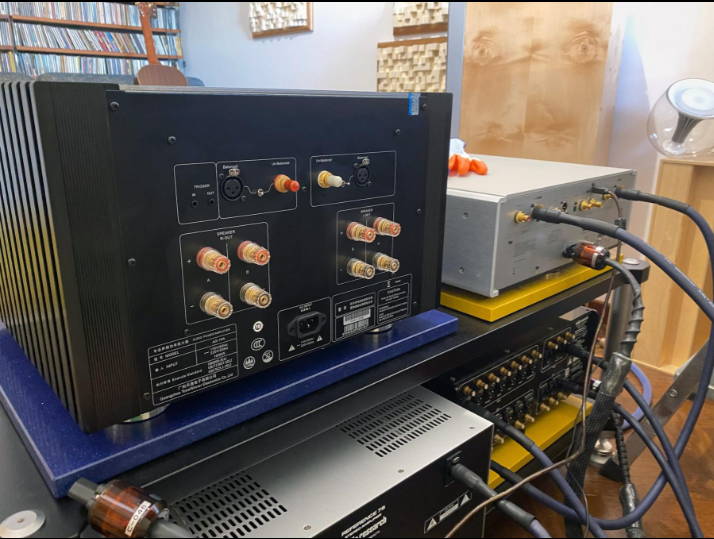
By selecting the option that the manufacturer defines as Class AB, and it would be more correct to speak of dynamic class A, the bias current is not set to its maximum limit but follows the request of the music program and its listening volume. The temperature of the amplifier and its current consumption benefit, obviously being significantly lower.

Finally, by selecting Class Auto on the front of the device, the bias current is regulated by a circuit that favors the temperature of the electronics and prevents a pre-established heating threshold from being exceeded. Basically, operation in class A is maintained until the temperature exceeds the predetermined acceptance threshold, beyond which operation is switched to class AB. This is an interesting and protective option when the device is kept on for long periods, especially in the summer season.
Finally, the wholesale hi fi power amplifier can also work only in class B, by connecting the speakers to terminal block B, an option recommended for the Home Theater.
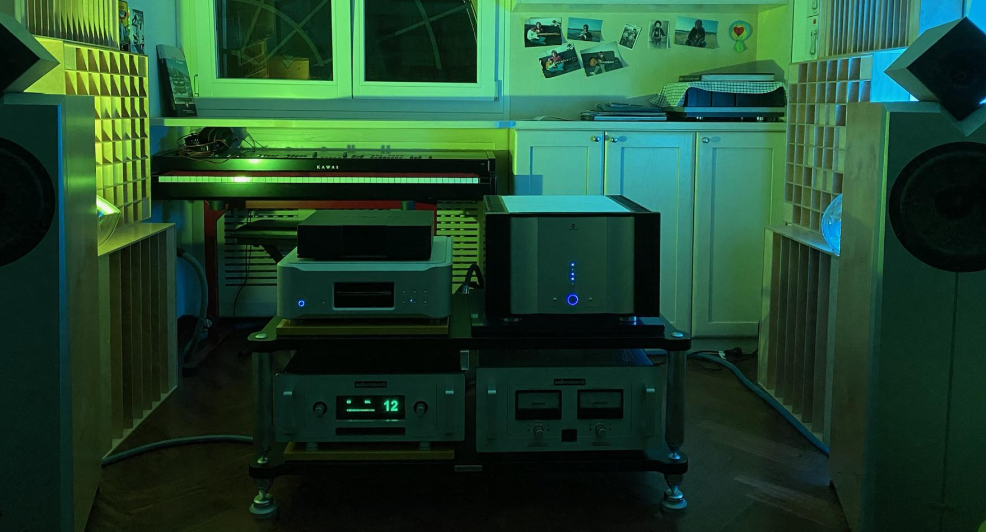
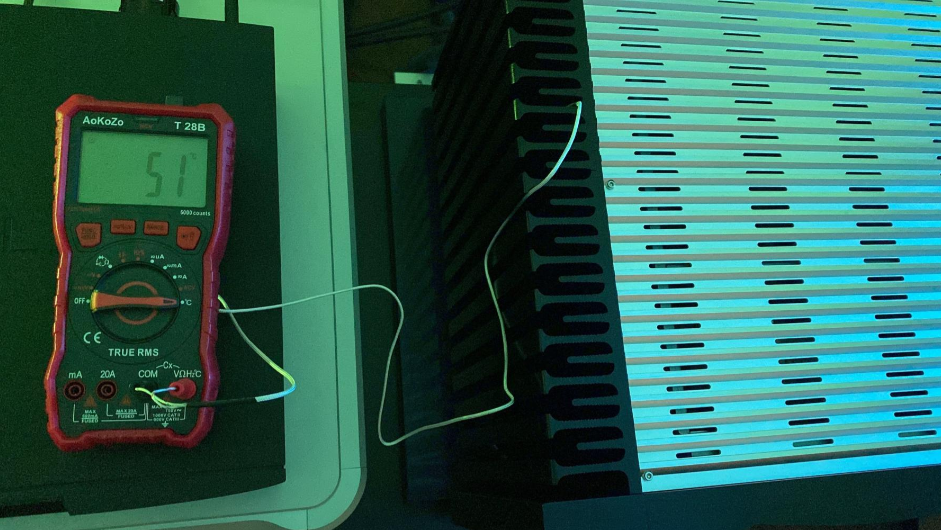
After the necessary description, let's move on to the ratings.
I inserted the ToneWinner into my system, driven by the Audio Research Ref. 5.
I connected the speakers to the terminals dedicated to class A, the most performing for no compromise listening, and selected the operating mode in pure class A. With the Class AB mode, something of the beautiful performance this amplifier is capable of is irreparably lost.
As references I used the Audio Research Ref. 75 and that old lion of the Pioneer M22, 30 watts of pure class A, now back to its best splendor after being curated by Alberto "Manidellafesta" Cavedon.
The first thing that strikes you right away is the absence of sensationalism and listening fatigue. After decades of audiophile attendance, I would say that we have all learned to recognize quality at first listen and here is great stuff. The sound texture develops liquid and velvety with a great sense of depth and with that typical fine texture that is the prerogative of great solid-state creations.
The tonal color appears perceptibly darker than the reference, which is absolutely plausible when comparing a solid state with a tube, but especially when the electronics are perfectly capable of enhancing the low regions of the sound spectrum with unusual energy and wealth of detail.
The ToneWinner gives an unusual thickness to the protagonists, fullness to the voices and a body that supports a particularly credible and three-dimensional scene from the ground up. The detachment in the middle range between the protagonist and the background black is one of those that impress, with an all-round sculptural effect that represents perhaps the most beautiful gift of this finale.
Just the deep bass and mid-bass, as powerful as it is controlled, immediately let us understand the thickness of the ToneWinner. Lots of substance without ostentation. It all seems damn natural and the ease of emission of the transients accentuates the feeling that everything simply sounds louder, bigger, more defined, without any sagging or advancement of the scene, without any hint of fatigue or hardening of the sound, even at very impactful volumes.
It is a great gift to pass as ordinary what is extraordinary and here everything is rendered with great ease, the music flows smoothly and with a strong illusion of perfection.
The scene stands out high and contrasted against an exceptionally dark background, with severe tense registers, which ends up conveying the overall perception of an empathic sound with airy tones.
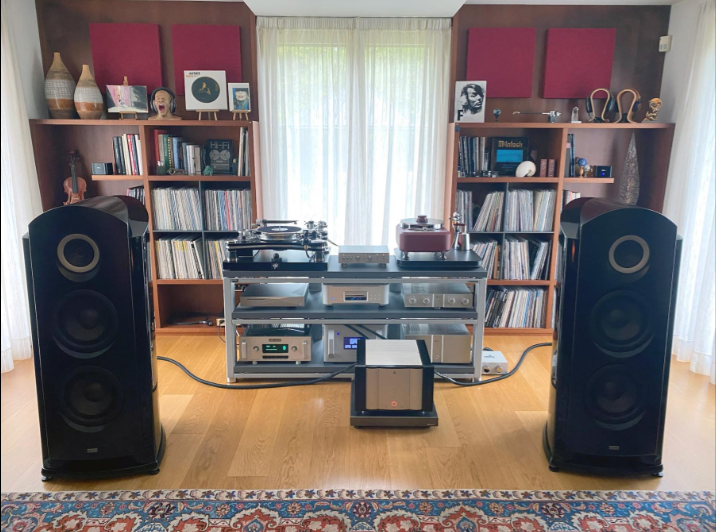
If the low range is authoritative and impactful, the medium is no less fleshy, clear and protagonist. Faced with such luxuriant sound texture, the high range is complementary and chiseling of spatiality, without ever indulging in protagonism, especially at impactful volumes. It is a style of presentation that is not pleased with that anemic, aseptic and self-referential neutrality that often plagues contemporary high-end production, but favors the upward extension, standing out on distant horizons full rounded figures. and credible. The scene has all the grandeur of Audio Research, perhaps with a greater sense of depth and with a concreteness factor that references do not have.
The richness of the valves of Ref. 75 gives life to vibrant and luminous figures on the stage, the harmonics flutter and saturate the room, indulging a lot on environmental information at the expense of the plasticity and overall depth of engraving of the protagonists, less detached from the background . The ToneWinner makes a mission of rigor and precision, cutting every instrument and voice with a burin with a moving “pop-up effect”. The result is one of those that capture, with a visceral and credible stage.
It didn't take me long to realize that this Chinese player plays in a higher category.
I enlist two unlikely porters to move the final to the home of my friend Luigi, which houses the best plant in the Bassa. Ed Lower Po Valley.
A large hall awaits us here, TAD R1 mk2 loudspeakers, Viola amplification, with the Cadenza pre and Symphony power amp, Esoteric K-01xs digital source, Innous streamer player and stunning analog setup: top-of-the-range VPI with three arms and as many cartridges, Torqueo with Ikeda arm and head, etc. etc. But, rest assured, I will not upset you: we made digital enough ...
In this system, the ToneWinner had to deal with the Viola Symphony, a solid state power amplifier of rank and, above all, had to face demanding loudspeakers in every sense.
As it should be at these levels, the ToneWinner needs attention. We had to work a lot on positioning, because resting directly on the floor or on the Taoc base, there was a loss of transparency in the mid-low range. Problem solved only by decoupling the Taoc base from the floor with DAM feet.
Then, the phase. With the electrical phase connected to the system, which in our case turned out to be with the plug in phase, the scene has gained in depth and height.
Finally, the electronics warm-up: 40 if not 50 minutes is the minimum time required by the Class A circuit to achieve the performance expected from this machine, which further improves after a couple of hours of operation.
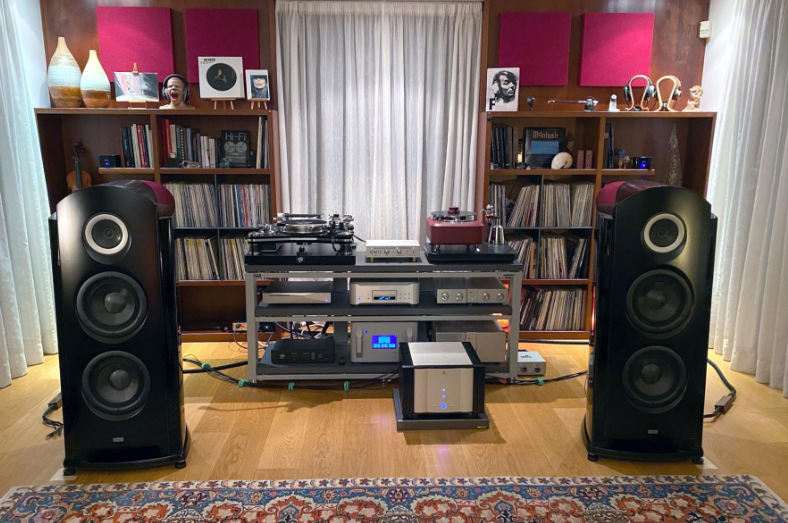
But let's get to the final listening ...
The ToneWinner enjoys a monstrous energy reserve that has made the scene turgid and contrasted even at impactful volumes. The low regions of the sound spectrum have acquired new life, supporting the entire music system from its foundations, giving body and materiality to the protagonists
But the destabilizing thing is that the ToneWinner did not show any awe even in the field of choice of the Viola, namely the refinement, transparency and richness of nuances. The mid-range of the ToneWinner is sumptuous and engaging and aided by a great sense of perspective. The airiness perceived in the high range is comparable with that expressed by the Viola. The horizons appear clear and extended. The harmonics fill the back wall, defining a stage with distant horizons.
However, the tone of the ToneWinner appears more meaty and engaging than the reference. The old ladies Tad seem to have grown as agile as taranta dancers. Lively and contrasted, crunchy and snapping, with a delightful step right from the lowest volumes.
When throttled, the live effect is devastating, in a mix of ease of emission and sculptural contrast. Perhaps for the first time, after so many blazoned electronics passed around these parts - YBA, Dan D'Agostino, Audio Research, Accuphase, Burmester, Gryphon, Dartzeel and Viola, to name a few - the ToneWinner seems to have finally restored the dignity of true champions, respecting their strong size and their aptitude for the emission of a physical and tactile sound wave even before the acoustic one, which sublimates and completes the perception of the event.
The Viola, by comparison, stops at an excellent reproduction of the event, without reaching that immersive capacity and the levels of emotional involvement of the ToneWinner.
It is hardly necessary to report that, precisely in this same field, about a year ago the Dan D'Agostino, although a monster of supply, did not reach the completeness of information that today manifests the ToneWinner compared to the Viola, paying his own duty in terms of refinement and airiness.
What to say? We looked at each other for a long time, we fans of the Bassa, each with their own beliefs and preferences for this or that brand, but all agreed that in those evenings of listening something extraordinary had happened.
We are faced with electronics that know the language of Hi-End. And he speaks it fluently with that property of expression that only the best can boast.
In a market plagued by insane prices, in a flourishing of electronics that are highly rated but responsible for sudden orchitis in the listener, it is rare to find such a successful, so damn fun and exciting ending.
There are no futuristic nanotechnologies or mystical schemes. Know-how is now banally within everyone's reach. The components are produced in China and Taiwan, albeit with Japanese or American brands. Production costs and economies of scale are the only real key to understanding the ToneWinner phenomenon. Together with seriousness and dedication and team spirit, typically oriental, as well as large investments, which are now increasingly rare commodities in Western Hi-Fi.
With these premises, it is useless to deny it, these Chinese will do the c..o. The various myths from America, Europe and Swiss wineries will be drunk in a single sip, wineries in comparison with production companies such as ToneWinner, absolutely self-referential, decontextualized and out of the market due to their own non-scale economic dimension.
There is no trick, there is no deception. Chinese like ToneWinner, with this quality / price ratio on a 10 to 1 scale, will outrun the competition and even burp. In the face of those who persist in wanting to keep their eyes and ears closed.
A power amplifier with an amazing quality / price ratio, as they have not seen in a lifetime and that will make a lot of talk about itself.
We journalists put our faces on it. For you readers, a simple listening may suffice.
Characteristics declared by the manufacturer
Class A circuit, completely balanced and symmetrical from the inputs to the output.
Manual selection of Class A, Class AB and Car Class mode.
Signal to noise ratio: 108dB A-weighted, XLR balanced inputs; 115dB A-weighted, unbalanced RCA inputs
THD: 0.008% 1kHz
Frequency Response: 10Hz-100kHz + 1 / -3dB
Gain: 29.5dB +/- 1dB
Power: 2x300W channel into 8ohm
Standby consumption: 1W
Automatic transformer: ~ 110V / 60HZ, ~ 220V / 50HZ
Net weight: 42kg
Dimensions: 444x294x449mm WxHxD
Official Italian distributor: to the Hifi Prestige website
System used: at the plant of Emilio Paolo Forte